
How to perform Namaz for women is one of the most important topics for every Muslimah who wants to strengthen her connection with Allah through proper prayer. Namaz (Salah) is not just a daily ritual — it’s a moment of peace, reflection, and closeness to the Creator. For women, learning the correct way to pray brings both spiritual reward and confidence, ensuring every posture, word, and intention aligns with the Sunnah of the Prophet ﷺ.
In this guide, we’ll walk you through how to perform Namaz step by step, explain the differences between men’s and women’s prayer postures, highlight common mistakes to avoid, and share essential Sunnah acts that beautify your Salah. Whether you’re learning for the first time or perfecting your prayer, this article will help you perform Namaz with devotion, accuracy, and peace of heart.
What is Namaz and why it’s essential for every Muslim woman
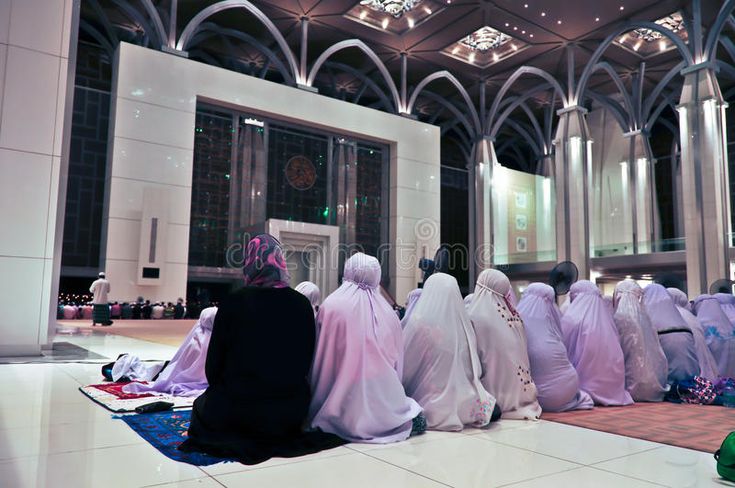
Namaz — or Ṣalāh in Arabic — is the central act of worship in Islam and the second pillar after the declaration of faith. It is performed five times a day, connecting a Muslim woman to Allah throughout all stages of her daily life. Namaz builds a woman’s identity as a believer — spiritually, emotionally, and morally.
Performing Namaz is not merely a routine; it is a sacred conversation between the servant and her Creator. With every bow, every prostration, and every whispered du‘a, a Muslim woman reaffirms her faith, renews her hope, and strengthens her heart.
Why Namaz is at the heart of a Muslim woman’s life:
- Direct connection with Allah
When she stands in prayer, she disconnects from the world and speaks privately to the One who listens to every heartbeat. - A source of emotional and spiritual strength
Prayer calms anxiety, uplifts the heart during hardship, and fills life with peace and purpose. - Daily discipline and mindfulness
The fixed timings remind her that Allah is always watching over her — guiding her through every moment of the day.
Islam honors women with compassion, so during menstruation or postnatal bleeding, women are exempt from praying — without the need to make up the missed prayers. This shows how Islam prioritizes ease, mercy, and well-being.
Importance of learning how to perform namaz for women correctly

Learning how to perform Namaz for women correctly is essential, because Salah is only accepted when done with the proper pillars, conditions, and recitations.
A beautifully performed prayer:
- Increases spiritual reward
- Enhances focus and presence of heart (khushu‘)
- Reflects obedience, love, and reverence for Allah
- Helps build strong Islamic habits from a young age
Just as a Muslim woman cares for her appearance and character, she also cares for the beauty of her Salah — ensuring each step, from wudu to tasleem, is done according to authentic teachings.
A correct Namaz strengthens the bond between a woman and her Creator, allowing her to feel His guidance in every decision and His mercy in every difficulty
The difference between men’s and women’s prayer postures
Islam teaches equality in faith and reward — yet recognizes the unique nature of women. Therefore, the core structure of Namaz for men and women is exactly the same — same recitations, same number of raka‘āt, same obligations.
However, there are minor differences in posture which reflect modesty and comfort for women:
- In rukū‘ (bowing), a woman keeps her body more relaxed and arms closer to her sides.
- During sujūd (prostration), she withdraws her limbs and keeps herself compact instead of spreading out like men.
- When sitting between prostrations or for tashahhud, she may sit in a way that is more modest and comfortable.
These small adjustments preserve dignity, privacy, and modesty — the precious jewels of a Muslim woman’s identity.
Women also have the flexibility to pray anywhere — and they are highly rewarded for praying in the comfort of their home or private space. And when attending the mosque, Islam ensures that women have designated areas where they can worship with focus and serenity.
Preparation Before Namaz: Steps on How to Perform Namaz for Women

Before performing Namaz, a Muslim woman prepares herself physically and spiritually to stand before Allah with complete humility and devotion. This preparation makes her prayer more meaningful and accepted.
1. Purity and Cleanliness (Taharah)
Purity is the first condition for prayer. A woman must be free from both minor and major ritual impurities.
- Wudu (ablution) – steps and Sunnah for women
If you are not in a state requiring major purification, you perform wudu following this beautiful Sunnah routine:
- Niyyah in your heart — you intend to purify yourself for Allah.
- Say “Bismillah”.
- Wash your hands up to the wrists three times, and clean between the fingers.
- Rinse the mouth and nose three times.
- Wash the face (hairline to chin, ear to ear) three times.
- Wash the right arm up to the elbow three times, then the left.
- Wipe the head once with wet hands, then wipe inside and back of the ears.
- Wash the feet up to the ankles three times, beginning with the right.
Tip for women:
Before wudu, remove nail polish or waterproof makeup that prevents water from reaching the skin — otherwise wudu is not valid.
- Ghusl (full purification) when required
Ghusl becomes obligatory during:
- After menstruation
- After postnatal bleeding (nifas)
How to perform ghusl properly:
- Make intention for purification
- Wash hands and private parts
- Perform a complete wudu
- Wash entire body ensuring water reaches the hair, scalp, and skin
Ghusl restores full spiritual purification and prepares a woman to return to prayer with renewed strength and peace.
- Ensuring clean clothes and prayer place
Your clothing and surroundings must be clean and free from physical impurities (najasah). This reflects respect and honor for the prayer you are about to perform.
2. Dress Code for Women During Namaz
Islam honors women with modesty. During prayer, a woman must cover her awrah properly
What to wear:
- Cover the body completely except face and hands (according to the majority of scholars)
- Some scholars recommend also covering the feet
- Wear loose, opaque clothing that doesn’t reveal body shape
- Wear a headscarf (khimar) covering hair, neck, and ears
Common clothing mistakes to avoid during prayer
- Tight leggings or clothing that outlines the body
- Transparent fabrics that show the skin or underwear
- Sleeves that slide up and expose the arms during prayer
- Short or loose hijab that reveals the neck while bowing or prostrating
A woman’s modest attire during prayer elevates her dignity and keeps her heart focused on Allah.
3. Choosing a Clean and Quiet Place
Where you pray affects your concentration and devotion.
Key points:
- Choose a clean area — free of impurities and distractions
- Using a prayer mat is recommended for cleanliness, though not required
- Make sure the space is quiet and private enough to pray with focus
Wherever you pray, remember that what truly matters is your sincerity and humility before Allah.
Step-by-Step Guide on How to Perform Namaz for Women
1. Intention (Niyyah)
Before beginning Salah, a Muslim woman forms a sincere intention in her heart — without verbalizing it. This intention defines:
- Which prayer she is about to perform (Fajr, Dhuhr, Asr, Maghrib, Isha, Witr…)
- Whether it is obligatory, Sunnah, or nafl
- If she is following an imam in congregation
Important:
There is no need to mention the number of raka’at in your intention.
Allah knows what is in the heart — and that is enough.
This moment prepares the heart to disconnect from the world and enter a state of peace and devotion.
2. Takbir and Qiyam (Standing)
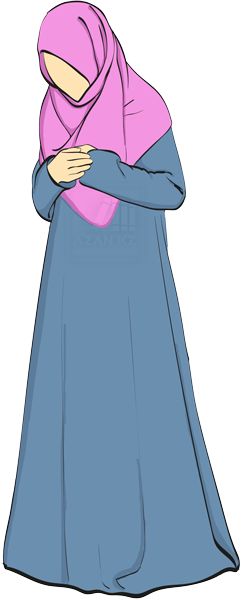
After intention, stand facing the Qibla with focus and humility.
Posture for women:
- Stand with the feet close together (more modest than men)
- Raise the hands to shoulder level
- Fingers naturally relaxed and palms facing the Qibla
- Say “Allahu Akbar” clearly enough that you can hear yourself — this marks the start of the prayer
After this opening Takbir:
- Eating, drinking, or any action outside the prayer becomes forbidden
- Women do not raise their hands again for other takbirs (except in Witr Qunoot or Eid prayer)
Hand placement:
- Place the right hand over the left
- Rest them on top of the chest
- Keep elbows close to the body (unlike men who spread their arms slightly)
- Eyes remain focused on the place of prostration to maintain concentration
Recitation while standing:
- Begin by reciting Surah Al-Fatihah slowly and with reflection.
- After completing it, recite a short Surah or several verses from the Quran — for example, Surah Al-Ikhlas, Al-Kawthar, or Al-Asr.
This posture reflects humility, modesty, and calmness — the beauty of a woman’s Salah.
3. Ruku (Bowing)

When bowing, women move with control and modesty — gently and without excessive spreading of limbs.
Correct Ruku posture for women:
- Bend just enough to place hands on the knees
- Keep fingers together, not wide apart
- Keep arms close to the sides (unlike men who keep arms away from the body)
- Back at a comfortable angle — not too straight or exaggerated
- Eyes look toward the top of the feet
The form remains soft and composed, maintaining a woman’s grace and modesty.
Tasbih in Ruku
Recite softly (at least 3 times):
سُبْحَانَ رَبِّيَ الْعَظِيم
Subḥāna Rabbiyal-Aẓīm
Glory be to my Lord, the Most Great.
This glorification reminds her of Allah’s greatness as she bows in humility before Him.
4. Rising from Ruku‘ (Standing After Bowing)
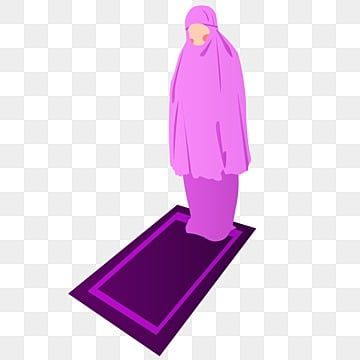
After completing the bowing posture and its tasbihat, a woman rises from rukū‘ with humility and focus.
Supplication for rising from bowing
While rising from rukū‘, recite in a lowered voice:
سَمِعَ اللهُ لِمَنْ حَمِدَه
Sami‘a Llahu liman ḥamidah
Allah hears those who praise Him.
Once fully standing upright and the body has settled, recite:
رَبَّنَا لَكَ الْحَمد
Rabbana lakal-hamd
Our Lord, all praise is for You alone.
It is optimal to say:
اللَّهُمَّ رَبَّنَا وَلَكَ الْحَمْد
Allahumma Rabbana wa lakal-hamd
Keep your gaze fixed on the place of prostration as you prepare to move into sujood.
5. Sujood (Prostration)
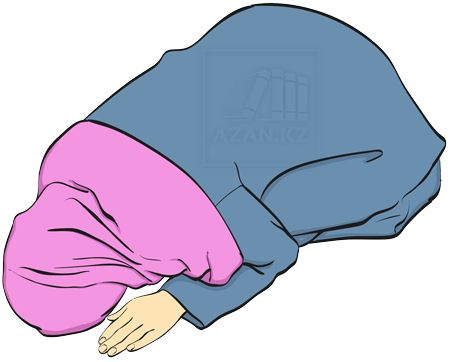
Moving into Sujood
Say “Allahu Akbar” in a lowered voice while transitioning into the prostration position — finishing the phrase when you reach the floor.
Then prostrate in this order:
- Knees on the ground first
- Then hands
- Then forehead and nose together
How a Woman Performs Sujood
A woman’s posture in sujood is slightly different from a man’s to maintain modesty:
- Keep the thighs drawn close to the stomach
- Elbows close to the sides of the body
- Forearms resting on the ground
- Toes relaxed and not held upright forcefully
- Hands placed beside the head, fingers together pointing toward the Qibla
- Eyes focused on the tip of the nose
This posture is more compact and reserved, reflecting a woman’s modesty and grace during Salah.
Tasbihat of Sujood
Recite softly at least three times:
سُبْحَانَ رَبِّيَ الأَعْلَى
Subḥāna Rabbiyal-A‘lā
Glory be unto my Lord, the Most High.
This is the moment when a servant is closest to her Lord — a time to feel deep humility and connection with Allah.
6. Jalsa (Sitting Between Two Sujoods)
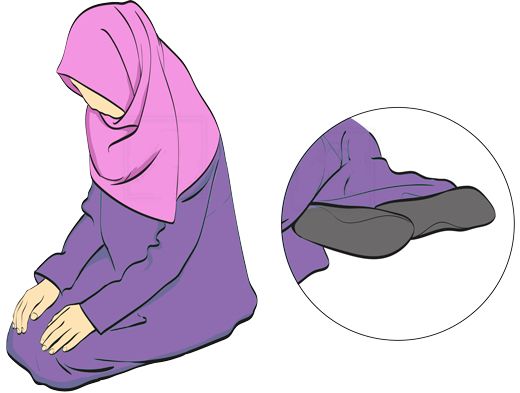
After the first sujood, the woman raises her head saying softly:
“Allahu Akbar”
Allah is the Greatest.
She sits up fully with calmness and focus — placing her hands gently on her thighs, with the fingertips reaching the knees.
Recommended Sitting for Women
For modesty and comfort, a woman brings her legs close together and sits on her left hip, with her knees and feet tucked neatly beside her body. Her elbows remain close to her sides — this posture is more modest and concealed.
The Supplication
While sitting in this peaceful pause, she says:
رَبِّ اغْفِر لي رَبِّ اغْفِر لي
“Rabbigh-fir lī, Rabbigh-fir lī”
My Lord, forgive me. My Lord, forgive me.
This brief sitting is a moment to regain calmness and ask Allah for mercy before prostrating again.
After completing this supplication, she moves into the second sujood with the same actions and words as the first — again saying Subḥana Rabbiyal-A‘lā at least once in a lowered voice.
7. Tashahhud and Tasleem: Final Steps in How to Perform Namaz for Women
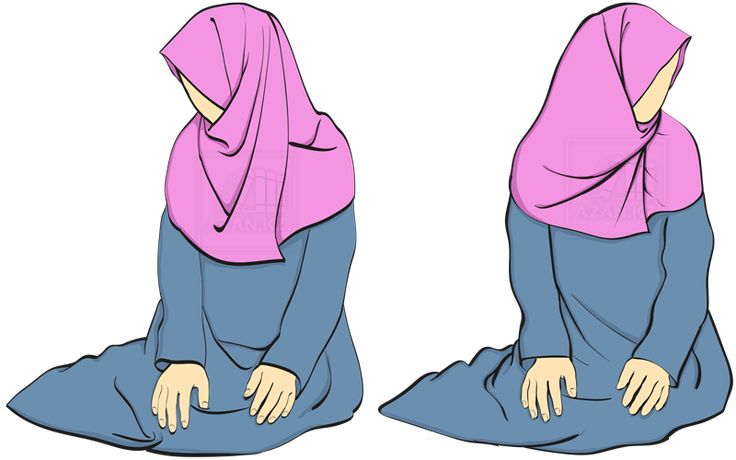
After completing the second sujood, the woman sits comfortably in the tashahhud sitting — legs tucked close to the body for modesty, hands resting on the thighs, gaze lowered.
She recites the tashahhud in a lowered voice:
At-taḥiyyātu lillāhi was-ṣalawātu waṭ-ṭayyibāt.
As-salāmu ʿalayka ayyuhan-nabiyyu wa raḥmatu-llāhi wa barakātuh.
As-salāmu ʿalaynā wa ʿalā ʿibādi-llāhis-ṣāliḥīn.
Ashhadu an lā ilāha illaLlāh,
wa ashhadu anna Muḥammadan ʿabduhu wa rasūluh.
All greetings, prayers, and pure words belong to Allah.
Peace be upon you, O Prophet, and Allah’s mercy and blessings.
Peace be upon us and upon all righteous servants of Allah.
I bear witness that none is worthy of worship except Allah,
and I bear witness that Muhammad is His servant and Messenger.
Raising the Finger
While saying “Ashhadu an lā ilāha” she raises her right index finger toward the qiblah,
and lowers it when finishing “…illaLlāh”.
Her thumb touches the middle finger to form a circle, while the other fingers remain relaxed and close together.
Sending Blessings on the Prophet ﷺ
If she is praying two rak‘ahs, she continues by softly sending salawat:
Allahumma ṣalli ʿalā Muḥammadin wa ʿalā āli Muḥammad
kamā ṣallayta ʿalā Ibrāhīma wa ʿalā āli Ibrāhīm.
Wa bārik ʿalā Muḥammadin wa ʿalā āli Muḥammad
kamā bārakta ʿalā Ibrāhīma wa ʿalā āli Ibrāhīm,
innaka ḥamīdun majīd.
O Allah, send Your mercy and blessings upon Muhammad and his family,
as You did upon Ibrahim and his family — You are indeed Praiseworthy, Glorious.
If the prayer is three or four rak‘ahs, she will stop after the tashahhud, stand up saying Allahu Akbar, and continue the prayer.
Common Mistakes Women Make in Namaz: How to Perform Namaz for Women Correctly
Even with sincere intentions, many women unknowingly make small mistakes during Salah that can affect its validity or reduce its reward. Becoming aware of these helps one improve both outward performance and inner focus.
1. Attire and Cleanliness
- Uncovered Feet or Tight Clothing:
A woman’s prayer attire should cover her entire body except the face and hands. Tight, transparent, or short garments that reveal the shape of the body are not acceptable.
Many scholars also advise that the feet be covered during prayer, as uncovered feet may invalidate Salah according to the majority opinion. - Improper Hijab or Head Covering:
The khimar (headscarf) must be secured properly so it does not slip during bowing or prostration. Exposing part of the hair or neck invalidates the prayer. - Unclean Garments or Prayer Area:
Salah is invalid if the clothing or the place of prayer is impure. Always ensure cleanliness before beginning.
2. Errors in Physical Posture to Avoid in How to Perform Namaz for Women
- Incorrect Sujood (Prostration):
During sujood, all seven points—the forehead and nose, palms, knees, and toes—must touch the ground. Some women mistakenly lift their feet or rest their forehead lightly, which is incorrect. - Resting Forearms on the Ground:
Women should keep their elbows close to their sides and forearms near the ground, maintaining a modest and composed posture — not spread out like men. - Improper Bowing (Ruku):
Ruku should be done with a straight back and hands placed firmly on the knees. Bowing too little or moving too quickly prevents achieving calmness (tuma’ninah). - Sitting Posture in Tashahhud:
In many schools, women are recommended to sit with their legs tucked to the right side (tawarruk) for modesty and grace, unlike the men’s upright sitting.
3. Issues with Focus and Rushing
- Lack of Concentration (Khushu‘):
A wandering mind reduces the reward of Salah. To increase focus, understand what is being recited and remind yourself that you are standing before Allah. - Rushing Through Movements:
Each position in Salah requires calmness. The Prophet ﷺ said, “The worst thief is the one who steals from his prayer,” meaning the one who performs it hastily without proper ruku‘ or sujood. Book 9, Hadith 406 - Looking Around:
Turning the head or eyes unnecessarily distracts from concentration. The gaze should remain fixed on the place of prostration.
4. Other Common Errors in How to Perform Namaz for Women
- Delaying the Prayer:
Intentionally delaying a prayer beyond its time is a major sin. Strive to pray on time for each Salah. - Incorrect Recitation:
Mispronouncing Quranic letters or rushing Surah al-Fatiha can alter meanings. Learning Tajweed ensures proper recitation. - Unnecessary Movements:
Fidgeting with clothing, hair, or accessories should be avoided as it breaks focus. - Forgetting Surah al-Fatiha:
This surah is a pillar of Salah. Forgetting to recite it invalidates the prayer. - Uneven Rows in Congregation:
In group prayers, rows should be straight and without gaps. Women should stand shoulder-to-shoulder, filling empty spaces to maintain unity.
Sunnah and Recommended Acts During Namaz: How to Perform Namaz for Women with Excellence
The Sunnah acts of Salah are practices taught and regularly performed by the Prophet Muhammad ﷺ. They are not obligatory but bring immense spiritual reward and enhance the beauty, humility, and completeness of the prayer. In contrast, Wajib acts are essential duties that, while not at the level of fard (obligatory), cannot be intentionally omitted.
Performing both Sunnah and Wajib acts with care reflects love and respect for the way the Prophet ﷺ prayed.
1. Sunnah Acts
- Raising the Hands:
Raise the hands to shoulder or ear level when saying the opening takbir (Allahu Akbar), when bowing for ruku, and when rising from ruku. - Placing the Hands:
Place the right hand gently over the left hand on the chest while standing in Qiyam. - Looking at the Place of Prostration:
Keep your eyes focused on the spot where your forehead will touch during sujood. This helps maintain khushu’ (focus and humility). - Standing Posture:
Stand naturally with feet a comfortable distance apart — not too close, not too wide. - During Ruku (Bowing):
Hold your knees with fingers spread and keep your back straight. - During Sujood (Prostration):
Prostrate firmly with your forehead, palms, knees, and toes touching the ground.
For women, it is Sunnah to keep the elbows close to the body for modesty.
2. Wajib Acts
These actions are necessary components of Salah, and skipping them intentionally makes the prayer incomplete.
- Tasbeeh in Ruku:
Recite “Subhana Rabbiyal-‘Azheem” — Glory be to my Lord, the Most Great. - Tasbeeh in Sujood:
Recite “Subhana Rabbiyal-A‘la” — Glory be to my Lord, the Most High. - Tasmee‘ and Tahmeed:
When rising from ruku, say “Sami‘a Allahu liman hamidah” (Allah hears those who praise Him), and after standing fully, say “Rabbana wa lakal-hamd” (Our Lord, to You belongs all praise). - Supplication Between Prostrations:
Say “Rabbigh-fir li” — My Lord, forgive me. - The First Tashahhud:
Reciting the first At-Tahiyyat and sitting while doing so.
3. Sunnah Prayers (Rawatib)
The Prophet ﷺ maintained regular voluntary prayers alongside the obligatory ones. These Sunnah prayers bring extra reward and protection in the Hereafter.
- Sunnah Mu’akkadah (Emphasized Sunnah):
- Two rak‘ahs before Fajr
- Four before and two after Dhuhr
- Two after Maghrib
- Two after Isha
- Sunnah Ghair Mu’akkadah (Non-Emphasized Sunnah):
- Four before Asr
- Two before Maghrib
- Two before Isha
4. Recommended Etiquette
- Maintain Khushu‘:
Focus your heart and mind on Allah, avoiding distractions and daydreaming. - Recite Short Surahs After Al-Fatihah:
Choose short Surahs like Al-Ikhlas, Al-Falaq, or Al-Asr to complete each unit of prayer with reflection. - Avoid Unnecessary Movements:
Stay still, humble, and composed throughout your Salah. Every movement should be deliberate and filled with purpose.
Conclusion

Performing Namaz correctly as a woman involves purity, proper attire, correct physical postures, focus, and understanding the Sunnah and Wajib acts. From standing in Qiyam, bowing in Ruku, prostrating in Sujood, sitting in Tashahhud, to completing the prayer with Tasleem, each step is an opportunity to connect deeply with Allah.
Remember: consistency and devotion matter more than speed. Even a mindful, slow prayer performed with khushu‘ brings immense spiritual reward. Strive to maintain these habits daily, and make Salah a source of inner peace, discipline, and closeness to Allah.
Learn with Areeb Academy
At Areeb Academy, we offer female-only, one-to-one online Quran and Islamic Studies courses designed especially for non-Arabic-speaking women who want to learn with full attention and comfort.
All our teachers are native Arabic speakers and fluent in English, ensuring that every lesson is clear, engaging, and easy to follow — no matter your background or level.
Our courses include:
📖 Quran Recitation & Tajweed
🕌 Islamic Studies
🗣️ Fusha (Classical) Arabic
Enjoy personalized guidance, flexible scheduling, and a supportive environment where your learning truly matters.
Book your free one-to-one trial class now and start your journey toward mastering Quran, Arabic, and Islamic knowledge with confidence.
FAQs About How to Perform Namaz for Women
1. Can women pray without a scarf?
No, covering the hair with a khimar or suitable head covering is required during prayer. The face and hands may remain uncovered.
2. What if the prayer time ends during menstruation?
Women are exempt from praying during menstruation or post-natal bleeding. Missed prayers during this period do not need to be made up.
3. Is it necessary to pray aloud in certain prayers?
Yes, in audible prayers like Fajr, Maghrib, and Isha (when praying alone), the recitation should be soft but audible. In silent prayers like Dhuhr and Asr, the recitation is done silently.
4. Are these courses suitable for children?
Yes! Areeb Academy offers special one-to-one courses for kids, designed to make learning Quran and Islamic studies fun and easy. Our teachers use interactive methods and gentle encouragement to help children build a strong Islamic foundation with love and confidence.
5. How can I join these courses?
It’s simple! You can visit our page to book your free trial class directly, or contact us on WhatsApp — our team will be happy to help you choose the right course and get started at Areeb Academy.


